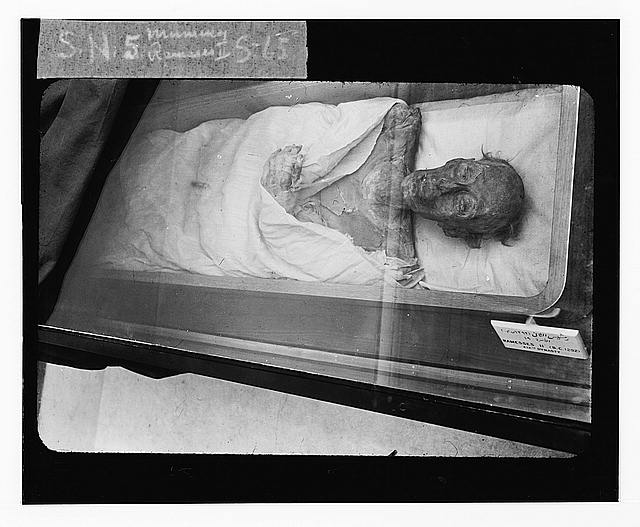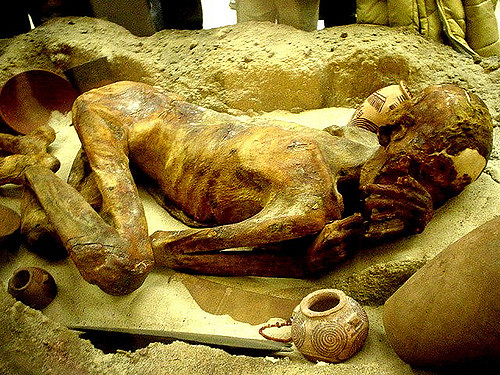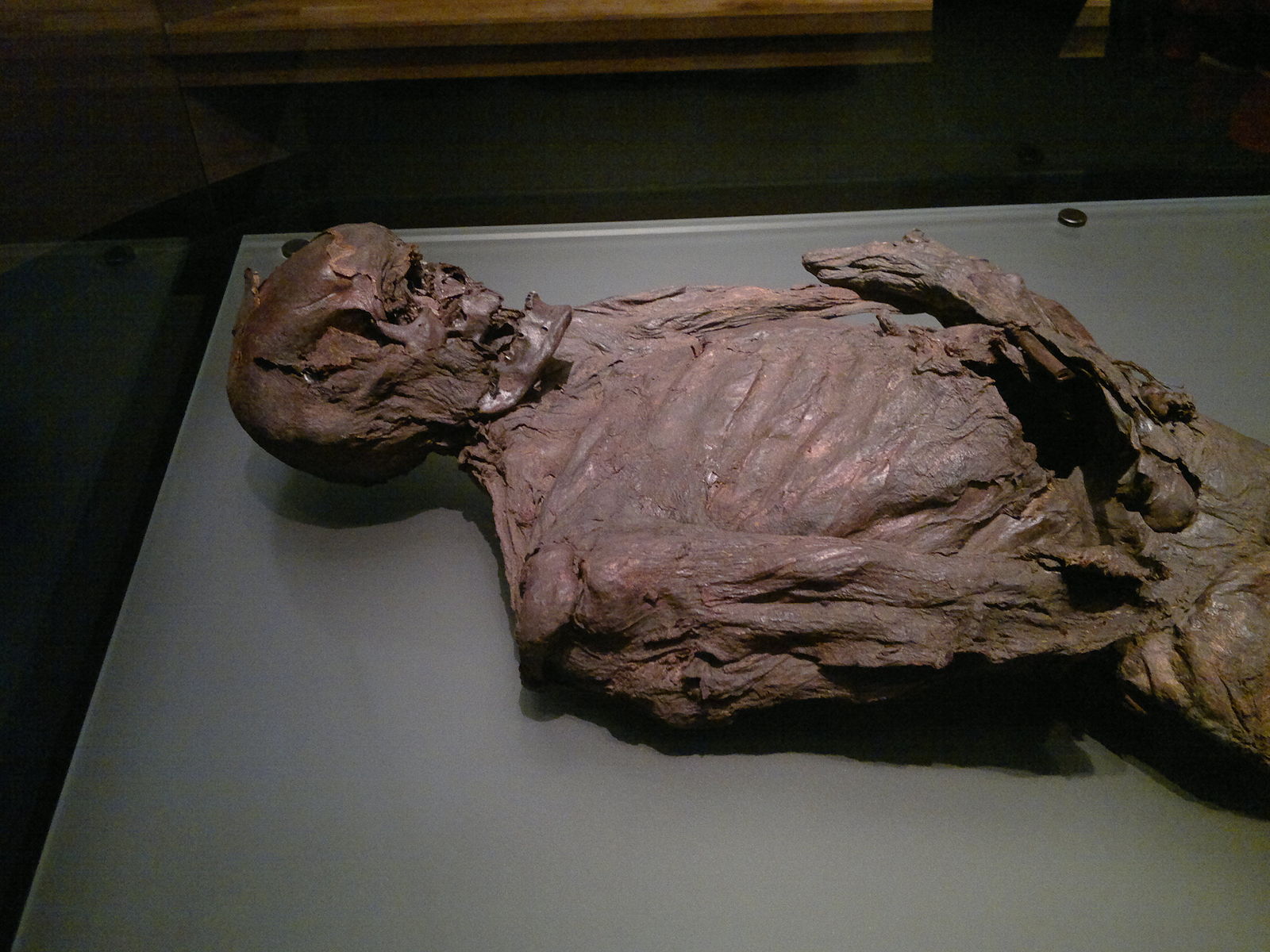Do mummies decompose? Why or why not? Find out how mummification works, and what happens to a human body when it doesn’t work so well.
As long as life has existed, so has death—and decomposition. Many cultures throughout history sought to prevent that ugly part of passing with mummification. But is it possible to actually prevent decomposition, or does mummification just slow things down?
To find out, we’ll explore different methods of mummification by examining mummies from around the world. But first, we’ll learn a bit more about what happens after we die. What is mummification trying to prevent, anyway?
How Humans Decompose
There are two main chemical stages of decomposition: autolysis and putrefaction. Autolysis is the first process after death, when cells begin to destroy themselves. Putrefaction happens afterward, when microbes (and eventually larger scavengers, including insects) begin to feed on and break down the body.
Autolysis
A few minutes after death, the lungs stop breathing and blood stops transporting oxygen throughout the body. As the acidity in cells increase, they are unable to rid themselves of waste, including carbon dioxide, and they are poisoned. The stagnant blood causes the skin to discolor.
When cells cease to function and die, they release digestive enzymes, kicking off the process of autolysis—literally meaning “self-digestion.” The cells dissolve, spilling their nutrient-rich fluids. Enzyme-rich organs like the liver and intestines autolyze more quickly than others.
Putrefaction
In the process of putrefaction, microbes come in to finish the work that the enzymes started. They destroy the remaining soft tissue, creating liquid, gaseous, and molecular byproducts. The body becomes bloated as a result of gases such as methane, ammonia, and sulfur dioxide, which form in the gut as a result of anaerobic fermentation. Most of these gases are able to escape through the rectum. (This is why dead bodies are known to fart or groan or burp.)
Now, bacterial activity helps muscles decompose into fatty acids and amino acids. As amino acids break down, compounds, including the foul-smelling putrescine and cadaverine, are produced. (Both compounds are toxic in large doses.) Electrolytes and minerals leach out of the body.
Eventually, the body runs out of nutrients to leach and liquid to drain. Most soft tissue has been broken down (or possibly turned to leather). After scavengers and microorganisms are done with their harvest, mainly hair and bones will remain.
Our skin and our immune system prevent microbes, such as bacteria, viruses, and fungi, from breaking us apart. Pathogenic microbes do occasionally enter our systems and cause illness, and individual cells do decay and decompose inside the body during these times.
However, in a healthy, living body, the immune system and other mechanisms resist the invasions and prevent a total meltdown. Only after the cells all shut down do the microbes successfully take over the body, causing complete and total decay.
Making Mummies
To prevent the oozing, rotting, putrefying mess of decay, cultures throughout history have practiced various methods of mummification.


In ancient Egypt, royalty and wealthy individuals were mummified after death through a process of organ removal and embalming. First, the embalmer removed all internal organs that might rapidly decay. Then, the body was covered and stuffed with salt to draw out liquids. Embalmers used natron, a type of salt known for its drying properties. Bodies were then wrapped in linens and buried in sarcophaguses, to keep out maggots and vermin.
The Guanches of the Canary Islands mummified members of their upper class by removing the organs and stuffing the cavities with a clay-like substance that contained pine bark and a moss called neckera intermedia. When the bodies were examined in the early 1990s, they had decomposed a bit, but the moss was still intact. “All of the plants used in packing the mummy were yellowed but otherwise in a remarkable state of preservation considering their age,” according to a paper published by the American Bryological and Lichenological Society in 1991. The mummies were also wrapped in goat skin to protect against exposure.
In the Philippines, the Iboloi had a different strategy for mummification, a process that lasted many months. They started the process before or shortly after death by having the individual drink a highly salted drink to help remove bodily fluids. (It is unlikely that this actually helped with preservation after death; since the body had stopped functioning, the fluid probably didn’t go through whole body). The individual was then wrapped in a blanket, seated, and placed near a fire–the latter action earned these mummies the moniker “fire mummies.” Over a period of days, fluid from the body was collected in a jar, and the mummy was placed in the sun to dry out more. The skin was peeled from the corpse, and then the bodies were wrapped in the blanket and buried in wooden boxes.
Unlike in the previous two methods discussed, not all of the Iboloi mummies were disemboweled prior to mummification; As a result not all of the internal organs were still intact upon discovery. A report published in a 2017 issue of Papers on Anthropology suggested that this could be due to the “quality of initial mummification procedure, antiquity of individual, and taphonomic changes over time.”


Natural Mummification
Of course, mummies aren’t always made—sometimes, they just happen. Under certain conditions, the environment can prevent a body from decomposing and create a mummy.
RELATED: SEE KING RICHARD III IN 3D
Hundreds of years ago, bodies were tossed into Irish peat bogs. These bogs turned out to be so acidic that bacteria and other microbes could not use them as hosts. The bodies found in these bogs have been very well preserved, likely due to the dearth of other organic matter to aid in the decomposition process.


Desert conditions can also cause mummification. A 4,000-year-old cemetery discovered in Tibet contained the bodies of about 200 people whose bodies seem to have been preserved by the dry, hot air. Ice, too, can preserve a body: Mummies have been found in the Andes in Chile (most famously Juanita, a female mummy whose organs were intact) and in the Alps in Italy (Otzi the Iceman had perfectly preserved DNA).
So, do mummies decompose?
“Mummification is typically the end result of tissue . . . with no nutritional value,” according to forensic anthropologist Arpad A. Vass. “Mummification most commonly develops in conditions of dry heat or in areas that have very low humidity, such as in arctic regions or deserts.”
With that definition in mind, all of the mummification methods discussed above make the mark, or at least come very close. Many of the ritual mummifications required the body to be drained of fluids, sealed from outside exposure, and stripped of soft tissue. And the accidental mummifications involved the bodies being kept in conditions ideal for preservation. Deserts, peat bogs, and ice all protect dead bodies from being eaten, as many microbes find extreme heat, acid, or cold inhospitable. (That’s why we cook and refrigerate our food: to kill off microbes that would break it apart.)
Whether they were aware of the science or not, the mummy makers of yore got the formula right: they stripped the bodies of nutrients and kept them dry, ensuring they would last for centuries to come.
References
Australian Museum. (2015). Stage 6: Dry decay – 50-365 days after death.
Beckett, R. G., Conlogue, G. J., Obinion, O. V., Salvador-Amores, A., & Piombino-Mascali, D. (2017). Human mummification practices among the Ibaloy of Kabayan, North Luzon, Philippines. Papers on Anthropology, 26(2), 24–37.
Horne, P. & Ireland, R. R. (1991). Moss and a Guanche mummy: an unusual utilization. The Bryologist, 94(4), 407–408.
Smithsonian. (n.d.). Egyptian mummies.
UNESCO World Heritage Centre. (2006). Kabayan mummy burial caves.
Vass, A. A. (2001). Beyond the grave: Understanding human decomposition. Microbiology Today, 28, 190–192.

